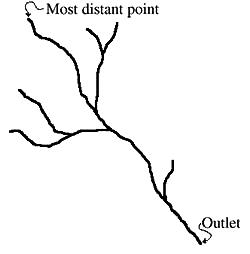Rational Method
The rational method is an intensity based rainfall method, meaning that it can be used to predict peak flows based on the characteristics of the catchment area and a rainfall event.
Objectives of Rational Method
Many hydraulic design problems require simply an estimation of the peak flow rate generated by a river system under specified conditions. In such problems, the general shape of the flood hydrograph and the time of occurrence of the peak flow rate are no special significance and need not be taken into account. In such cases, the Rational Method can be applied to estimate the peak flow rate. Also when adequate data are not available this method can be applied.
Rational Method Assumptions
- The rainfall is uniform both spatially and temporally.
- The drainage area is small.
- The duration of the rainfall is equal to the catchment’s time of concentrations.
- Peak flow occurs when the entire catchment area is contributing.
- The recurrence interval of the peak discharge is equal to that of the rainfall intensity.

